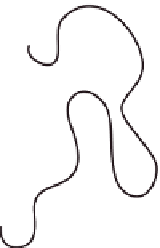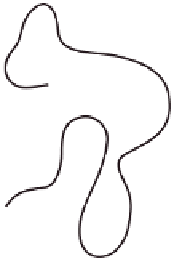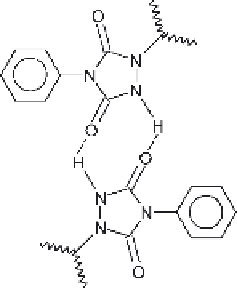Biomedical Engineering Reference
In-Depth Information
Schematic representation of the introduction of specifically interacting groups to a linear chain.
Adapted from de Lucca Freitas and Stadler (1987) © 1987 American Chemical Society.
Figure 4.12
Hydrogen bond complexes between two urazole groups. Adapted from de Lucca Freitas and
Stadler (1987) © 1987 American Chemical Society.
Figure 4.13
4.4.2.3
Entangled sticky chains (LRC model)
There is a third model for entangled melts or concentrated solutions of polymers, which
also aims to relate the microscopic lifetime of the junction to the macroscopic stress. An
early example of this class of materials is the poly(butadiene) chains with attached
urazole groups studied by de Lucca Freitas and Stadler (
1987
), designed to form binary
hydrogen bonded cross-links of this type, as shown in
Figures 4.12
and
4.13
.
Data for storage modulus versus reduced frequency for melts of sticky poly(butadiene)
chains with various numbers of urazole groups are shown in
Figure 4.14
. The added
urazole groups dramatically change the shape of the curve and the transition to the
terminal behaviour (G
0
~
2
) becomes more gradual.
The model by Leibler, Rubinstein and Colby (LRC) (Leibler et al.,
1991
) deals with
the situation where the chains have many temporary cross-links, with S units attached to
each chain. These units are called
ω
'
stickers
'
and can associate to form reversible cross-
links. The stickers are at
fixed positions.


































Search WWH ::

Custom Search